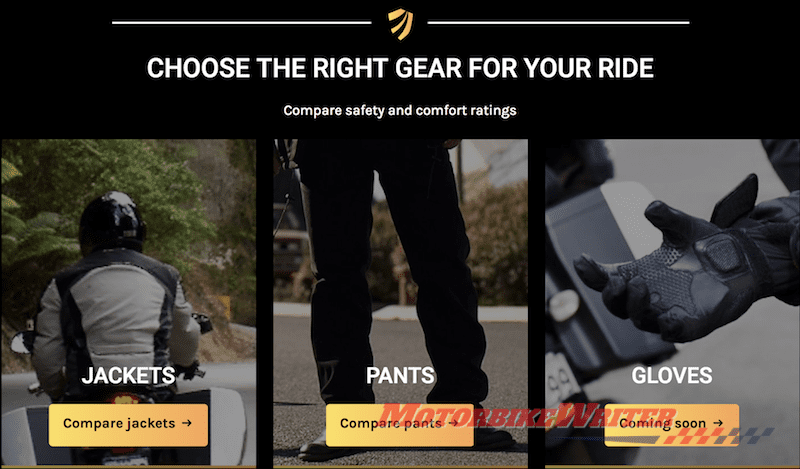Part 2 – The new levels of the standard.
Over the past seven years, Europe has developed a new clothing protection standard (EN17092).
We have asked Dr Chris Hurren to explain the new European standard and what it means for Aussie riders.
Dr Hurren is a research scientist at Deakin University in Geelong where he and his laboratory works on protective motorcycle clothing. He worked with Dr de Rome and others to produce the protocol that is used by MotoCAP for their testing regime.

Clothing standard: Levels
This is the second in a four-part series explaining the new levels. Click here for part 1.
The new standard EN17092 specifies the testing protocols for the required protection levels for five classes of garment.
- AAA – Heavy duty protective garments
- AA – Medium duty protective garments
- A – Light duty protective garments
- B – Light-duty abrasion protection garments (no armour)
- C – Impact protector ensemble garments
Class AAA garments are designed to be most protective with the highest requirements for impact abrasion, tear and seam strength. Class AA have a lesser requirement for abrasion, tear and seam strength. Class A has the lowest requirements for protection with abrasion measurement only being required for the zone 1 and 2 areas. The Class B garments have the same requirements as Class A but do not have to be fitted with armour. Class C garments are armour-only garments such as off-road protection vests or knee braces. Class AA and AAA must be fitted with armour in the shoulders, elbows, hips and knees. Class A garments also must have armour in the shoulders, elbows and knees however the fitting of hip armour is optional. If the armour is not in the garments hanging in the store ask the salesperson for them as they are meant to be there.
EN17092 covers the same range of factors as those in EN13595, including impact abrasion resistance, seam tensile strength, fabric tear strength, impact energy absorption of armour, restraint system effectiveness and the positioning of protective components. It also outlines that the garment should be tested for materials innocuous to ensure that there are no harmful chemicals present and no running dyes. Tear strength, ergonomics, restraint and armour testing are the same as were in the previous standard EN13595 whereas impact abrasion resistance, seam strength and risk zones are now measured and defined in a new way. Each of the new methods are detailed in the three other parts of this series.
As you read the last two parts you may ask yourself is this standard set high enough? The biggest concern with a low standard is that manufacturers will build to it. An example of this would be why put a para-aramid layer into protective denim pants when the right denim by itself will achieve the “Class A or AA” rating. It costs less to manufacture and while it is not the highest rating it is still achieving certification. It is evident from the changing quality of garments in Australian and New Zealand stores, that a number of manufacturers are already doing this and it is not just limited to denim. Unfortunately change in this space is slow with riders replacing their gear infrequently so it will take a number of years before any reduction in protection would show as increased injury numbers.

The best step forward for riders is to be careful in what you buy. Use common sense, advice from other riders and tools such as MotoCAP to help you make the right choice. Remember if the product feels too thin or seems too good to be true then it is probably not protective. Be especially wary of “Class A” rated garments. As riders, we can show manufacturers that products with reduced safety levels are not acceptable by not buying them. This movement has already been seen in the UK where riders are avoiding the thin single-layer denim jeans because they just don’t feel safe in them.
The next article looks at the differences in impact abrasion resistance measurement.


